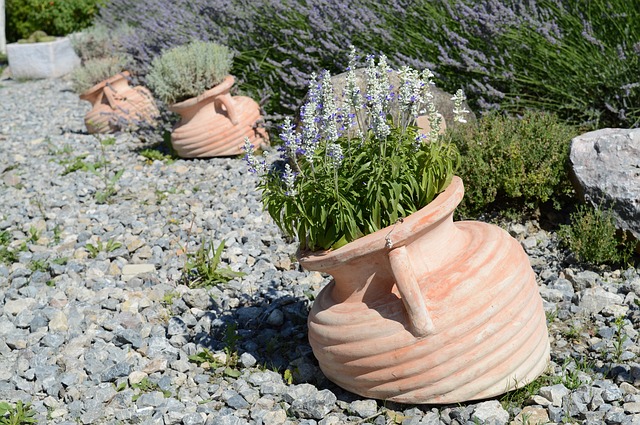How to stop white gravel going green
Decorative aggregates and garden stones can be used to create stunning, low-maintenance elements for landscaping, gravel patios, paths, and water features in any outdoor environment.
Garden stone requires little maintenance – whether you’re using slate chippings, decorative gravel, cobbles and pebbles, or even slate monoliths, cleaning and maintaining your garden stone is simple – a quick wash and some basic care will keep your decorative stone garden features looking great all year!
Landscape rocks come in a wide range of forms, colors, and textures to complement any lawn or garden. Dirt and debris can accumulate on your landscape rocks as a result of daily exposure to the outdoors, dulling their appearance. Maintain the hues and textures of your landscape rocks by cleaning them at least once a year. Avoid using harsh cleansers like chlorine bleach or muriatic acid, regardless of the sort of rocks you have. These chemicals are hazardous to plants and can harm your lawn or garden.
White gravel turning green
If your stone has developed a slight green tint, you should wash it. This happens gradually over time on porous materials like marble, limestone, and sandstone, but it happens faster on porous products like marble, limestone, and sandstone. The most convenient way to clean your stone is using a power hose.
How do you clean white gravel?
To remove stuck-on dirt, spray the rocks with a high-pressure garden hose. Spray all sides of the rocks by turning them often. Scrub them with a scrub brush to remove any dirt that didn’t come loose during the spraying. Fill a bucket halfway with hot water and a light detergent.
Some factors will have a greater impact on the appearance of your gravel than others. You may need to clean the gravel more frequently depending on the color and location of the gravel in your garden. Due to foot traffic, dirt is more likely to appear on footpaths, and gravel that is less exposed to sunlight or utilized near water features will develop algae on the surface much more quickly.
Marble and limestone, for example, are softer ornamental stones that may discolor more quickly than granite and quartz.
Garden stones are more likely to discolor due to dust and filth during dry seasons with no rain. A high-pressure garden hose, on the other hand, can quickly rinse dirt, algae, and dust away from any gravel color. Simply rinse the garden gravel with the hose on a low setting. The water will be absorbed into the ground beneath the gravel since it is porous.
Cleaning white garden gravel and stones
The color white is one of the most popular ornamental aggregate colors. Polar White Marble Gravel’s beautiful, white tones are the perfect accent color to contrast with darker shades of slate, brickwork, or planting schemes, but they also look stunning on their own as driveways, walks, patios, or decorative borders.
Lighter colored garden stone, on the other hand, is more prone to lose part of its lovely natural bright sheen due to grime. The good news is that it is very easy to clean, and a simple wash with a high-pressure hose generally suffices.
If any dirt remains, softly brush the white aggregate with soapy water. Vinegar is an excellent natural alternative to dishwashing solutions for preserving the natural beauty of white garden pebbles and gravel.
How to restore the whiteness of small garden stones
Step 1: Using a metal hardware cloth or mesh cloth, sift out any loose particles from the stone and throw the sieved gravel or aggregate into a wheelbarrow. Make sure the wheelbarrow is covered with a tarpaulin sheet.
Step 2 – In a large bucket, combine 50 mL bleach with approximately 20 litres water.
Step 3 – Fill the wheelbarrow with the diluted bleach mixture, making sure all of the stones are submerged.
Step 4: Let it sit for 24 hours. If there is a chance of rain, cover the wheelbarrow with an extra tarp sheet to keep the cleaning solution from becoming diluted.
Step 5 – Empty the bleached water into a bucket and replace the stones in their original locations in your garden. Your stones should be whiter than they’ve ever been!
Cleaning solution may be damaging to plants and wildlife, make careful to dump it down the drain.
In addition, how do you clean white stones?
Using a rag, apply a few drops of a neutral cleaner like stone soap. Wipe the surface of the stone with to clean surface dirt, use a wet rag. In a bucket, combine 1/2 cup ammonia with 1 gallon of water and soak a towel in the solution. With the rag, wipe away the soap residue from the stone surface.
What is the best way to clean white marble gravel? White Marble Rocks: How to Care for Them
- Use your garden hose to spray the white marble rocks.
- Set the white marble rocks out in the sun to air dry.
- Combine warm water, 1 cup bleach for 10 gallons of water, and 2 tablespoons mild dishwashing liquid in a tub or large bucket.
- Place the white marble rocks in a tub of water with a shovel.
Also, how can you restore the whiteness of white gravel?
If there are no other plants around, you could spray them with hydrochloric acid (diluted of course), wait 40 minutes, and then shower them down to restore their whiteness.
What is the best way to clean white rocks?
- Use an outdoor broom to sweep away any loose dirt.
- If you wish to remove moss or other small plants off the rock, use full-strength household vinegar.
- Use a harsh wire brush to scrub the dead moss and other small plants from the rock.
- Use a hose to rinse the rock.

